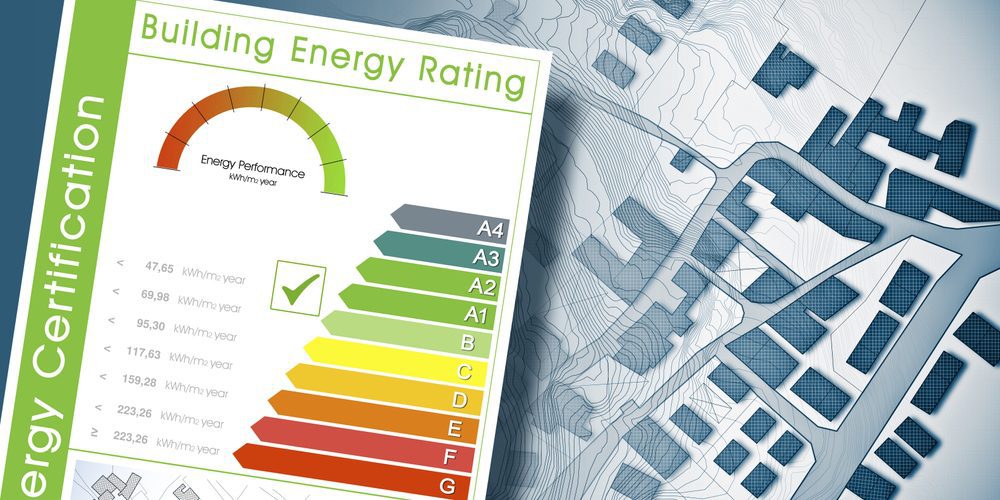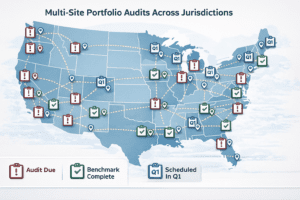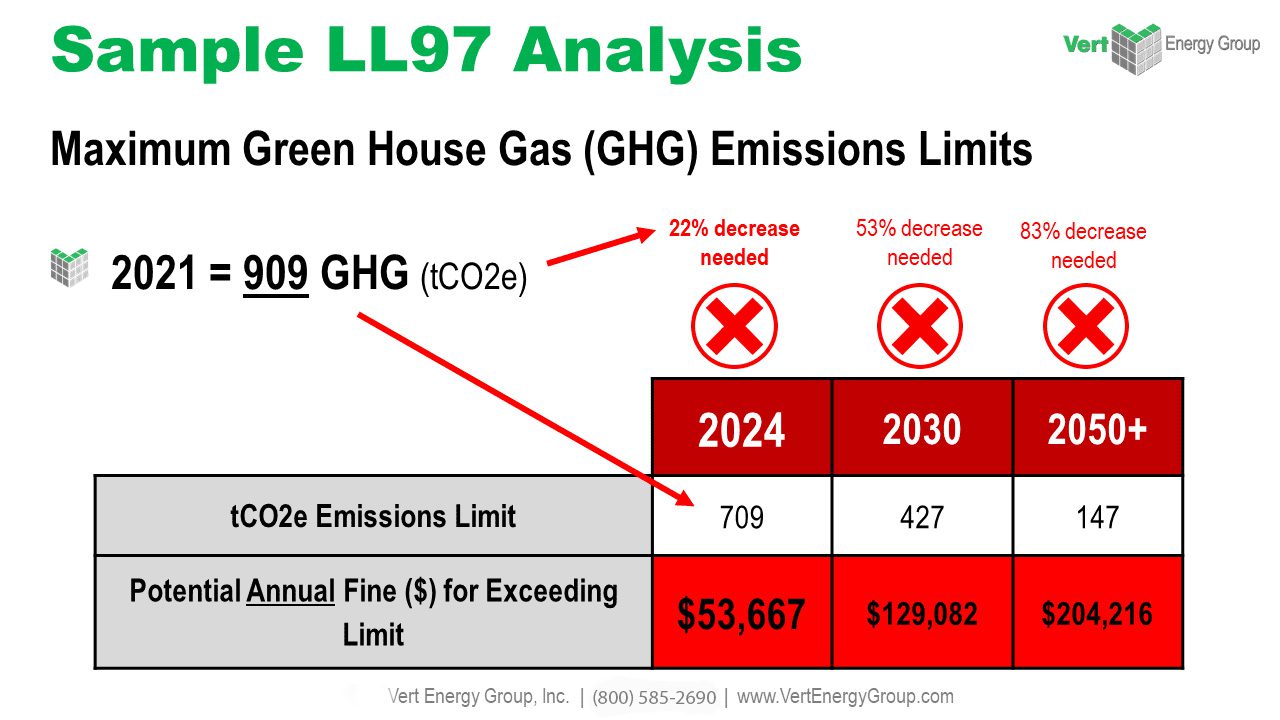Festive Cheers to 2023's Energy Milestones!
As we deck the halls and revel in the holiday cheer, let's toast to the energy triumphs of 2023! This year has been nothing short of a sustainability saga, with energy benchmarking and energy audits transforming how we power our workplaces and homes. Nationwide, cities have adopted the green mantle, championing initiatives that make our buildings not just structures, but stewards of efficiency. We’ve seen California soar with its carbon-neutral aspirations, while New York's skyline glitters with a newfound commitment to slashing emissions under Local Law 97. From Seattle's savvy Building Tune-Ups to St. Louis's mindful energy ordinances, every policy
has been a step toward a more sustainable tomorrow. So, as we bask in the warm glow of the holiday lights, let’s celebrate the energy victories that have made 2023 an exemplary year for environmental stewardship. Here's to the progress we've made and to the brighter, greener future we're building together!
Happy Holidays!
In an era defined by environmental concerns and the urgent need to reduce our carbon footprint, energy efficiency has emerged as a paramount solution. The world is witnessing remarkable trends and innovations in energy efficiency that are reshaping industries, buildings, and lifestyles. Here, we explore some of the latest trends in energy efficiency that are paving the way for a more sustainable future.
- Smart Buildings and IoT Integration:
The concept of smart buildings is not new, but its evolution continues. Now, with the integration of the Internet of Things (IoT), buildings can operate more efficiently than ever. IoT sensors and systems can monitor and adjust lighting, heating, cooling, and other building functions in real time. This not only enhances comfort but also significantly reduces energy consumption.
- Green Construction Materials:
The construction industry is embracing sustainable practices and materials. From
energy-efficient insulation to recycled building materials, construction is becoming more
environmentally friendly. Additionally, the use of innovative materials like aerogels and
super-insulated windows is improving the thermal performance of buildings. - Renewable Energy Integration:
The integration of renewable energy sources, such as solar panels and wind turbines,
into the energy grid is a significant trend. With advancements in energy storage solutions, excess energy can be stored for later use, ensuring a continuous and reliable power supply. - Energy-Efficient Transportation:
Electric vehicles (EVs) and hybrid cars have gained immense popularity, contributing to energy-efficient transportation. Improved battery technologies and charging infrastructure are making EVs more accessible, reducing emissions from the transportation sector. - AI and Data Analytics:
Artificial intelligence (AI) and data analytics are transforming energy management. AI algorithms can optimize energy consumption in real time, reducing waste and costs.
Machine learning models are used to predict energy usage patterns and enhance
energy efficiency. - Government Policies and Incentives:
Government initiatives are a driving force in promoting energy efficiency. Incentives, tax credits, and regulations are encouraging businesses and individuals to adopt energy-efficient practices and technologies. - Energy-Efficient Appliances:
Energy Star-rated appliances and devices are becoming the norm. Consumers are
increasingly choosing products that are not only efficient but also smart, allowing for
remote control and automation. These trends collectively represent a shift toward a more sustainable and energy-efficient future. The integration of advanced technologies, green building practices, and a heightened global awareness of the importance of energy efficiency will play a crucial role in reducing our carbon footprint and creating a greener planet for future generations.
Commercial buildings are central players in the global efforts to combat climate change and reduce greenhouse gas (GHG) emissions.
With the built environment accounting for a significant portion of global energy consumption and carbon emissions, the commercial real estate sector has a vital role to play in the transition to a sustainable, low-carbon future. This article delves into the importance of managing GHG emissions for commercial buildings and outlines key strategies to achieve meaningful reductions.
Commercial buildings, including offices, retail spaces, and industrial facilities, are responsible for a substantial portion of GHG emissions. These emissions stem from electricity consumption, heating, cooling, and various operational activities. Improving energy efficiency in commercial buildings is one of the most effective ways to reduce GHG emissions. It not only lowers operational costs but also aligns with global sustainability goals.
Key strategies for managing GHG emissions include conducting comprehensive energy audits and benchmarking the building’s energy performance. This provides a baseline for identifying areas where energy consumption and emissions can be reduced. Another key strategy is implementing energy-efficient technologies and building retrofits. This can lead to significant GHG reductions. This may include upgrading lighting systems, HVAC systems, and insulation. Leveraging smart building technologies and Internet of Things (IoT) solutions enables real-time monitoring and control of energy consumption, enhancing operational efficiency and GHG management.
It is important to raise awareness among building occupants about the importance of energy conservation and to encourage eco-friendly practices which can lead to meaningful reductions in energy use. Managing waste streams and promoting recycling and composting within the building can significantly reduce the environmental impact. Encouraging the use of public transportation, cycling, and electric vehicles among employees and visitors can help minimize emissions associated with transportation.
Other ways to reduce environmental impact include harnessing renewable energy sources like solar panels or wind turbines, which can offset a substantial portion of a building’s energy demand with clean, emissions-free power. Achieving certifications like LEED (Leadership in Energy and Environmental Design) or BREEAM (Building Research Establishment Environmental Assessment Method) can demonstrate a commitment to sustainability and GHG reduction. Reducing GHG emissions in commercial buildings not only aligns with global sustainability goals but also offers tangible business benefits, including lower operational costs, enhanced property value, and an improved corporate image.
Managing GHG emissions in commercial buildings is a crucial component of the broader effort to combat climate change. With the adoption of energy-efficient technologies, renewable energy sources, and sustainable practices, the commercial real estate sector can significantly reduce its carbon footprint and contribute to a more sustainable future.

Energy efficiency and sustainability are no longer optional in the commercial building landscape—they’re imperative. States across the U.S. have enacted a variety of energy benchmarking ordinances and regulations that can be dizzying for building owners and managers. Whether you’re managing a single property or a vast portfolio across different states, understanding these complex regulations is crucial to staying compliant and optimizing energy usage.
Take California, for example. It’s a juggernaut of energy consumption and has spearheaded aggressive energy efficiency policies. By setting a goal of 60% renewable energy by 2030 and carbon neutrality by 2045, California is leading the charge.
Compliance with the statewide Energy Benchmarking Ordinance involves reporting energy use for commercial buildings over 50,000 square feet. Local policies in Los Angeles, San Francisco, and other cities further tighten the benchmark, pushing buildings to become more efficient and sustainable.
Energy benchmarking is the first step toward embracing a greener future, and it’s made easier with tools like the ENERGY STAR Portfolio Manager and the VertPro© Platform.
From Miami’s Building Efficiency 305 Program to Boston’s BERDO policy, the push for energy transparency is clear. Each city offers specific guidelines, deadlines, and, importantly, support to help buildings improve their performance.
The challenge is significant, but the rewards—both financial and environmental—are immense. Owners can reduce energy costs, bolster their building’s market value, and contribute to healthier communities. It’s a journey worth embarking on, and the first step is understanding the regulations that pave the path forward.

Managing a construction project can be a complex endeavor, requiring careful planning, efficient execution, and precise oversight. VertPro® Upgrades is a versatile platform that can help you streamline and optimize your construction projects. Here’s a guide on how VertPro® Upgrades can help to manage your construction project effectively:
1. Project Scheduling:
Creating a detailed project schedule within VertPro® Upgrades. Define milestones, deadlines, and dependencies to ensure a clear timeline for your project.
2. Task Management:
Break your project down into tasks and assign responsibilities to your team members. VertPro® Upgrades allows you to track task progress and adjust as needed.
3. Budgeting and Cost Control:
Use VertPro® Upgrades to set and monitor your project budget. Keep track of expenses, compare them to the budget, and receive alerts for cost overruns.
4. Communication and Collaboration:
Utilize VertPro® Upgrades as a central communication hub for your project. Share project updates, documents, and revisions with your team members in real-time.
5. Document Management:
Store all essential project documents, including blueprints, permits, and contracts, securely within VertPro® Upgrades for easy access and version control.
6. Risk Management:
Identify and assess potential risks to your project. Use the platform to create risk mitigation strategies and monitor risk factors throughout the project’s lifecycle.
7. Quality Control:
Establish quality control measures within VertPro® Upgrades to ensure that your project adheres to industry standards and meets the desired quality criteria.
8. Progress Tracking:
Monitor the progress of your project with real-time updates and status reports. Use the platform’s tracking features to stay informed about how your project is advancing.
9. Compliance and Regulations:
VertPro® Upgrades can help you remain compliant with relevant construction regulations and standards. Stay updated with any legal requirements to avoid potential issues.
10. Safety and Risk Mitigation:
Prioritize safety on your construction site by utilizing the platform to monitor safety compliance, report incidents, and implement safety measures. By effectively using VertPro® Upgrades, you can centralize project management tasks, streamline workflows, and enhance collaboration among your team. This ultimately leads to improved project efficiency, reduced costs, and higher quality results, ensuring the success of your construction project.
Did you know that the average person will spend approximately six months of their lifetime waiting at red traffic lights? It may seem astonishing, but this accumulated time comes from the countless moments of halted traffic we experience each day. Traffic lights are an essential part of our road infrastructure, regulating the flow of vehicles and ensuring safety on the roads. However, technological innovations across the world are now seeking to make our wait times at red lights more efficient and less frustrating.
In various cities, smart traffic management systems are being implemented to improve traffic flow.
These systems use real-time data and advanced algorithms to optimize signal timings based on traffic conditions. For instance, in Singapore, the Intelligent Transport System (ITS) coordinates traffic lights using sensors and cameras to adjust signal timings dynamically, reducing congestion and minimizing delays. Similarly, cities like Los Angeles and Barcelona have installed adaptive traffic signal systems that learn from real time traffic patterns, allowing traffic lights to adapt and optimize signal timings accordingly. These innovations hold the promise of reducing the time spent waiting at red lights, making our journeys smoother and more efficient.
December, a month filled with anticipation and joy, holds a captivating charm of its own. As November fades, the air becomes crisp, unveiling a magical wonderland. Twinkling lights adorn the streets, and decorated trees symbolize hope and renewal. In this enchanting ambiance, December invites us into a season of wonder and togetherness.
Diverse traditions celebrated worldwide mark this month. From Hanukkah to Christmas, Kwanzaa to Diwali, rituals bring people together, fostering unity and strengthening bonds. Reflection becomes paramount as we look back on the year and celebrate personal growth and achievements. Intention setting for the future becomes a focus, drawing inspiration from stories of resilience.
December also reminds us of the power of giving and kindness. Acts of generosity and compassion flourish, impacting lives through donations, volunteering, and spreading cheer. Sharing kindness brings immeasurable joy, especially during this season.
Amid the festivities, December encourages pausing and cherishing loved ones. Gathering around a fire, rekindling connections, and creating lasting memories become priorities. Expressing gratitude and establishing new traditions deepen the bonds of family and friendship.
Captivating us with its enchanting allure, December invites us to embrace the magic of the season. Let us open our hearts to the December spirit, finding joy in simple moments, giving wholeheartedly, and cherishing the love of those around us. Allow its enchantment to guide you with warmth and wonder into the new year.
















